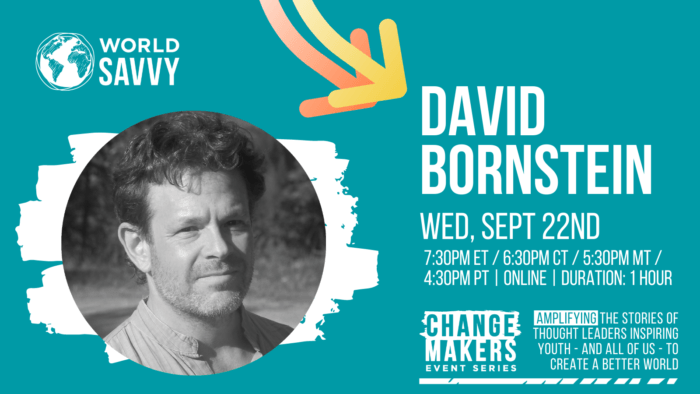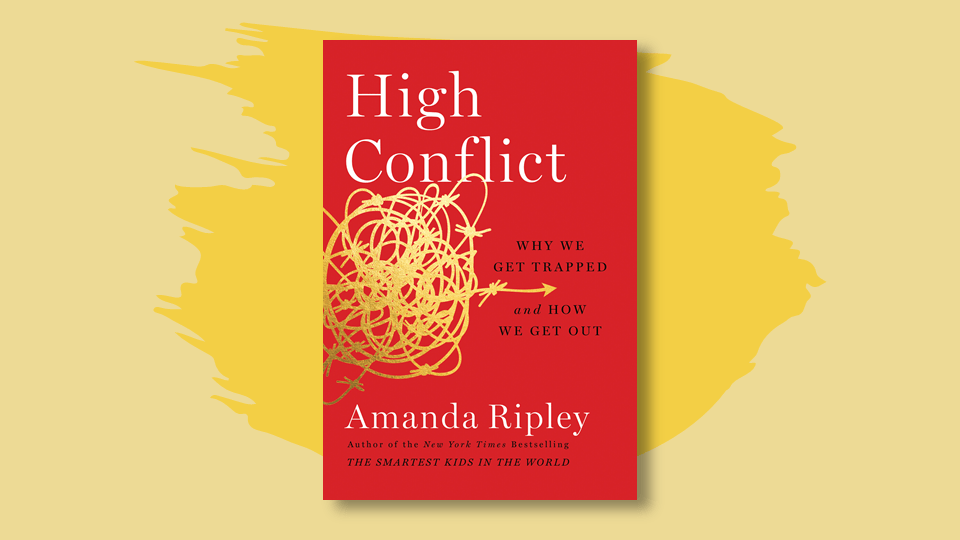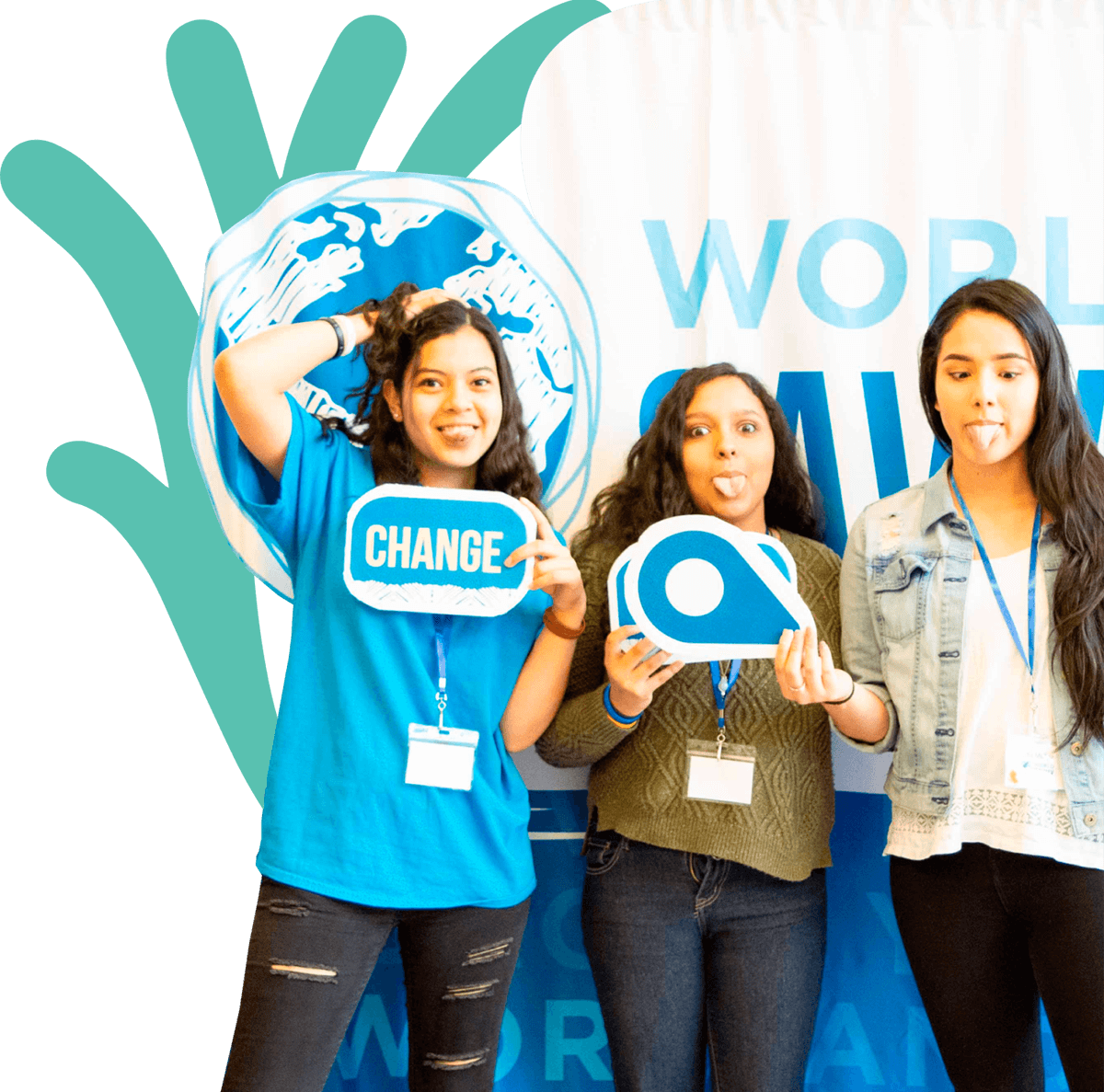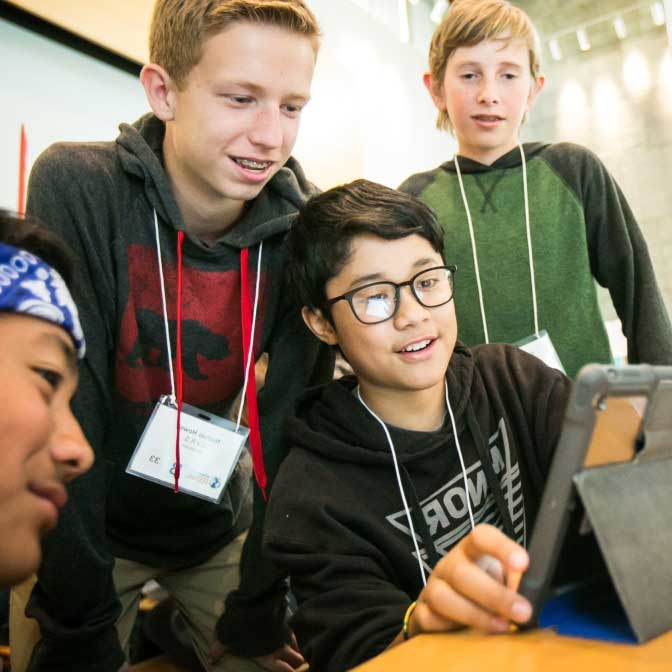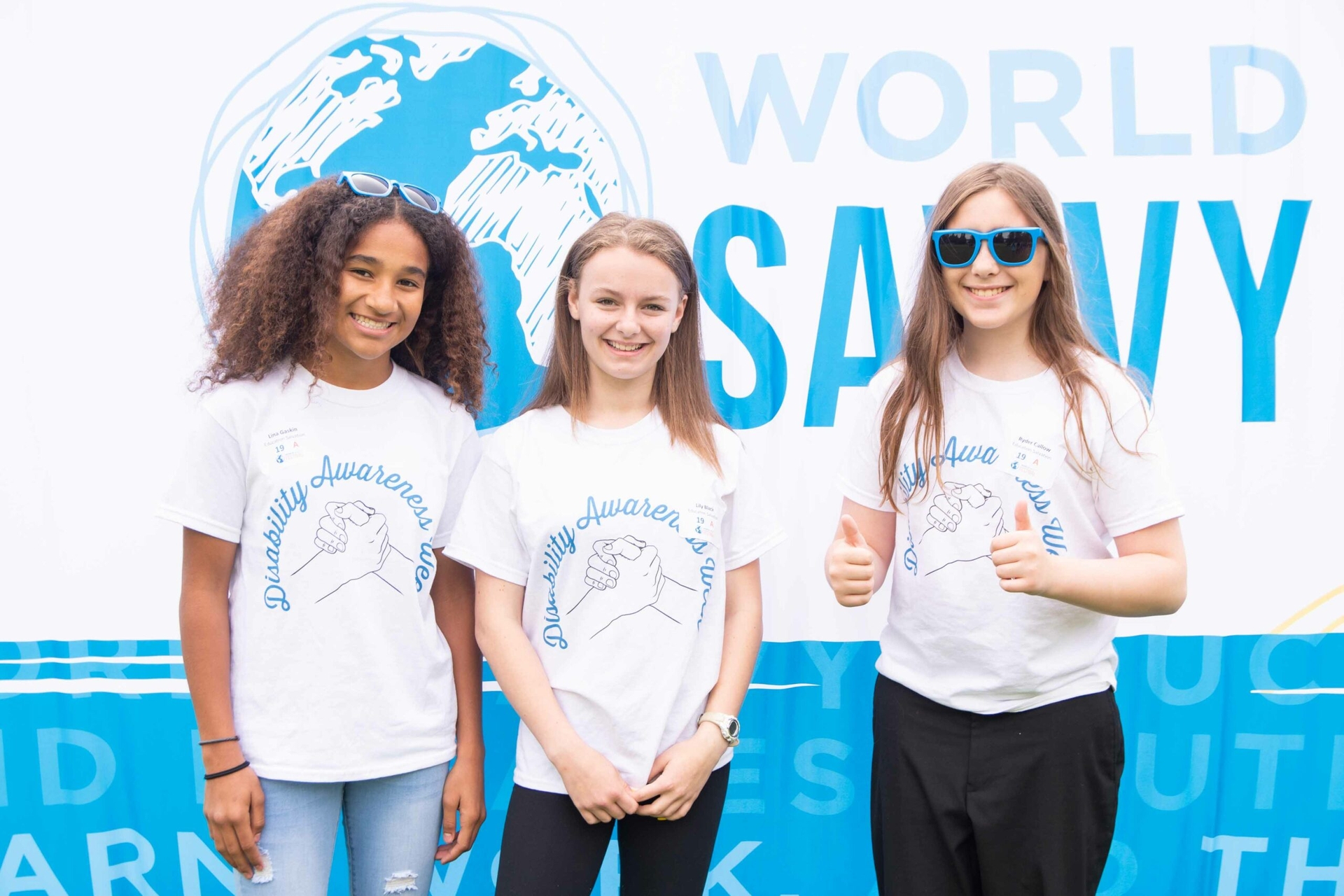
One thing remains certain in a world fraught with unknowns — students need connection more than ever; connection with teachers, connection with peers and connections to the content they are engaging with on a daily basis.
Evidence shows that relationships are critical in school reform efforts. Higher levels of trust and collaboration have been associated with a greater openness to innovation and improvement [1]. Connections between and among students also matter. Through collaboration with peers and teachers, students are able to critically analyze the world in which they currently live, the historical and social connections to that world, and imagine a future of hope and possibility. Further, collaborative problem-solving provides students with experiences that better prepare them to be problem solvers and citizens as they matriculate through school and into careers.
World Savvy’s work is grounded in a set of Evidence-Based Principles that leverage nearly 20 years of experience embedding Global Competence in K-12 teaching and learning. The first of the four principles is Cultivating Connections. Our goal is to identify and nurture connections across individuals and issues to make learning personal and relevant.
What this looks like in the classroom:
- Personalizing learning to center students’ strengths, needs, and interests
- Emphasizing connections across issues and subjects
- Exploring and nurturing connections across identities
- Constructing meaningful opportunities for collaboration
World Savvy is kicking off our school year with several new team members who have a collective total of over 80 years of experience in the field of education. Meet the team below and hear more about the ways in which they prioritized building connections in their classrooms.
- Lay the foundation by establishing strong classroom culture with imagery and exercises.
From KK Neimann, who joined World Savvy as the Director of Professional Learning in June.
“Back-to-School was always my favorite time! As a 6th grade Humanities teacher, my students were new to middle school and coming from many different elementary schools, so it was essential to spend a lot of time building community with kids.”
“To begin that process, we spent a lot of time exploring and understanding our Classroom Culture. I had a gigantic poster up that started with “In this classroom, we will…”, and kids worked in groups to discuss the behaviors that could go along with the items on the list. What does it look like to “Form opinions based on facts and exploration”? What does it look like to really “Listen” and “Collaborate” and “Be patient with ourselves and others?” The classroom walls were filled with examples of the kind of thinking and feeling I wanted them to do in my space. One poster was a quote from James Baldwin – “You have to decide who you are and force the world to deal with YOU, not with its idea of you.” Another came from Minnesotan author Sun Yung Shin and said, “Tell me the truth of the matter. When I don’t understand, I will not protest or judge or correct, I will simply listen harder. I am here to recognize you as my fellow human being with a story.” Another said “Listen to understand, not to respond.” I used these posters as models for how we would all show up in my space, and we looked to them all the time for guidance.” - Build connections with an identity circle.
From KK Neimann, Director of Professional Learning.
“Once our Classroom Culture was set and understood, I built connections through an Identity Circle exercise. Everyone in the room, including me, identified and shared the identities that are important to us. I talked through my circles first as a model for students, and then they got to sit at their tables and think through their own identities. Kids shared what they were comfortable sharing, and their circles included things like gender, race, nationality, religion, age, sexual orientation, birth order (“I am the oldest child.”), sports they play (“I am a soccer player”), hobbies and talents (“I am a musician”), and so on. As I circulated around the room, I got to chat and connect with kids about their circles, and in turn, they chatted and shared identities with their peers. As a group we discussed how identities can change over time, how some of our identities are misunderstood or stereotyped, and how it would feel if someone chose our circles for us or ignored one of our circles. It is a powerful exercise; everyone feels seen, and everyone feels they know their peers better. In addition, they learn that everyone has identities that are important to them, and to really understand someone, we have to try and know all their circles.”
“I will miss engaging in these activities with students this year, but I am excited to work with teachers and support their efforts to connect with their own students and create communities where everyone feels seen and valued. It is only from that place that kids can learn.” - Create opportunities for students to build connections outside of the classroom.
From Molly Dengler, who joined World Savvy as a Professional Learning Facilitator in MN in June.
“As a special education teacher and administrator across different settings, I created opportunities for my students to cultivate connections with the greater school community to be seen for their strengths, provide leadership opportunities and combat the isolation that can sometimes occur in a special education setting. One student with autism practiced functional and social skills through an internship with our facilities manager which included passing out lunches. My self-contained 1st and 2nd grade class created awareness around school recycling procedures and performed weekly inspections by completing a scorecard for each classroom to ensure that the recycling was not contaminated.” - Talk about communication preferences to build a stronger team.
From Whitney McKinley, who joined World Savvy as a Professional Learning Facilitator in the Bay Area in MN in June.
“Communication was always a cornerstone of my classroom community, whether I was teaching math, science, or art. In order to work together and grow as a team, we not only needed to communicate, we needed to understand how our communication styles and preferences interact with those of others. The beginning of the year is a great time to start building communication pathways, to better understand each other, and to learn how we like to give and receive feedback. In the first weeks of school our team would explore simulations, complete personality tests, share personal communication preferences, and most importantly, reflect on how these experiences would influence our work together. By acknowledging and understanding communication differences early on, we were able to lay the foundation for rich discussion and productive feedback as the year progressed.” - Don’t do it all. Build cohesion by empowering students.
From Shumit DasGupta, who joined World Savvy as a Professional Learning Facilitator in the Bay Area in November of last year.
“As a high school science teacher, I always struggled with the sheer amount of ‘stuff’ needed to do; proper labs, creating models, and generally keeping the classroom functional. We had a year of labs ahead of us, and I was just one person. The solution? As many parents and elementary school teachers could probably tell you, it was ‘make the kids do it.’ It sounds obvious at first, but putting the onus and responsibility of maintaining the classroom offered students to be vested in the community — they controlled where materials lived, tracked it through a spreadsheet, made sure all the classroom pets and organisms were taken care of, and fell into a routine when they arrived to class. Not immediately, and not without practice, but establishing this practice in the beginning of the year was entirely worth it. This simple cornerstone — the expectation that students needed to do their part so that we could get to the fun business of doing actual science — added a cohesiveness to the classroom experience that can’t be replicated with a list of rules or an addition to the syllabus. Once we worked out the kinks in the system, it was an unspoken ritual that wasn’t verbal, didn’t need prompting, and added a sense of comfortable routine to the start of every class.”
World Savvy partners with schools and districts to integrate global competence in K-12 teaching, learning, and culture. This is a dynamic process that isn’t a one-size-fits-all program model, so our partnerships demand responsiveness. Our work is anchored in four overarching principles:
- Cultivating connections
- Promoting active, interdisciplinary learning
- Fostering Knowledge-to-Action
- Reflecting and adapting
Today’s blog featured the first of four principles. We will dive into the remaining three over the course of the school year. Stay connected!
[1] Bryk, Anthony S and Barbara Schneider. (2003) Trust in Schools: A Core Resource for School Reform. Creating Caring Schools, Volume 60, Number 6, pp. 40-45. http://www.ascd.org/publications/educationalleadership/mar03/vol60/num06/Trust-in-Schools@-A-Core-Resource-for-School-Reform.aspx





